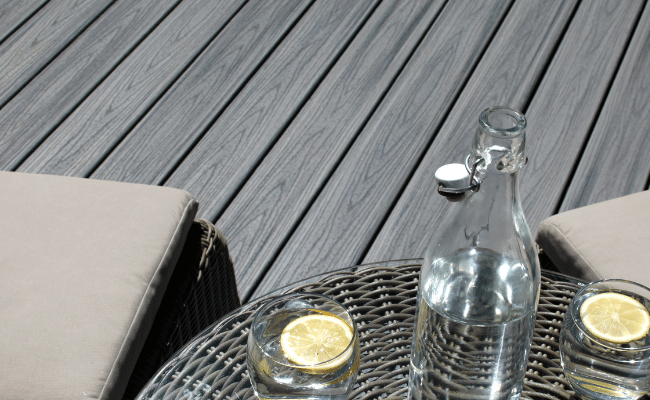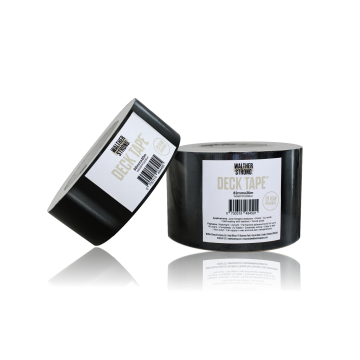When homeowners decide to invest in a new decking area, it’s important to remember the lifespan of your subframe is likely to be shorter than your Trex composite decking.
Deck joist tape will prolong the life of any garden decking area by protecting the timber substructure and allowing a long-lasting designer composite decking area to stand the test of time.
Trex composite decking is guaranteed for 25 years in residential use and features a hard-wearing plastic cap which is fade, stain, mould and scratch resistant. The composite boards themselves will not rot, twist or splinter and you’ll never need to re-paint or stain them again.
However, if you want this designer deck to be safely supported by the timber substructure for the same amount of time, this is where deck tape comes into play, for a minimal extra cost.
How to use deck flashing tape
Deck tape, also known as deck joist tape, is an affordable way to protect your deck substructure.
It is a peel-and-stick flashing tape which allows the wooden substructure to breathe because it is applied as a cap directly on top of key points such as joists and beams.
The tape also seals around the fixing point which can often be a weak point on a deck substructure and more prone to moisture penetration and subsequently rot.
Deck substructures can fail in numerous places where standing water gathers such as under deck boards, at frame abutments and at post ground level. Deck tape can be used to protect all these areas by creating a much-needed barrier.
What are the other benefits of using deck tape?
It’s watertight, air and smoke-tight and features an easy release. It’s also UV stable and self-sealing.
A non-butyl self-sealing tape for example, manufactured from a strong polymer acrylic adhesive, will give a completely waterproof and weatherproof seal.
How long this protection lasts will vary depending on the manufacturer, but some brands will offer a permanent adhesive bond for 50 years and a 25-year guarantee. That’s exactly what you want for a beautiful composite decking area.
All our deck tape is suitable for use with our Trex composite decking ranges.
The use of deck tape is especially important for composite decking boards because more of the moisture will be absorbed into the timber substructure as it will drain off the water-resistant deck boards.
If you leave your timber substructure unsealed, increased amounts of moisture will mean that the frame will rot faster.
Non-butyl tapes are also UV stable, keep their integrity for longer and are stable from -40C to +93C, with no cracking, peeling or strength loss.
Where do you apply deck tape?
Deck tape should be applied along the top of joists as a cap. It is important not to wrap the whole timber in tape which prevents it from breathing.
This protects the timber as it creates a strong seal, guarding against moisture where it overlaps. This will stop water sitting on top of these flat surfaces and eating away the timber.
Tape should be used on areas of timber that have contact with the ground. It can even be used on fence posts to create a waterproof and watertight seal.
Cut ends on timber are a weak spot where moisture can enter more easily because there is no treatment, but a single layer of deck tape will seal it off.
Fasteners are another key area to apply deck tape. A layer of tape will prevent corrosion around stainless steel fittings and treated timber.
Deck flashing tape is available in different widths to ensure a full watertight covering of different width timbers, including double timbers that are often required for framing boards.
It makes sense
A question we often hear is why would I install new composite decking, which is extremely long lasting, on top of a timber substructure which won’t last as long?
The solution is deck tape. Whether you’re opting for a modern and contemporary composite decking area, or traditional hard wood timber decking, don’t forget about deck tape.
This one simple and cost-effective addition will extend the lifespan of your new decking and mean you can enjoy it for many more years to come.



